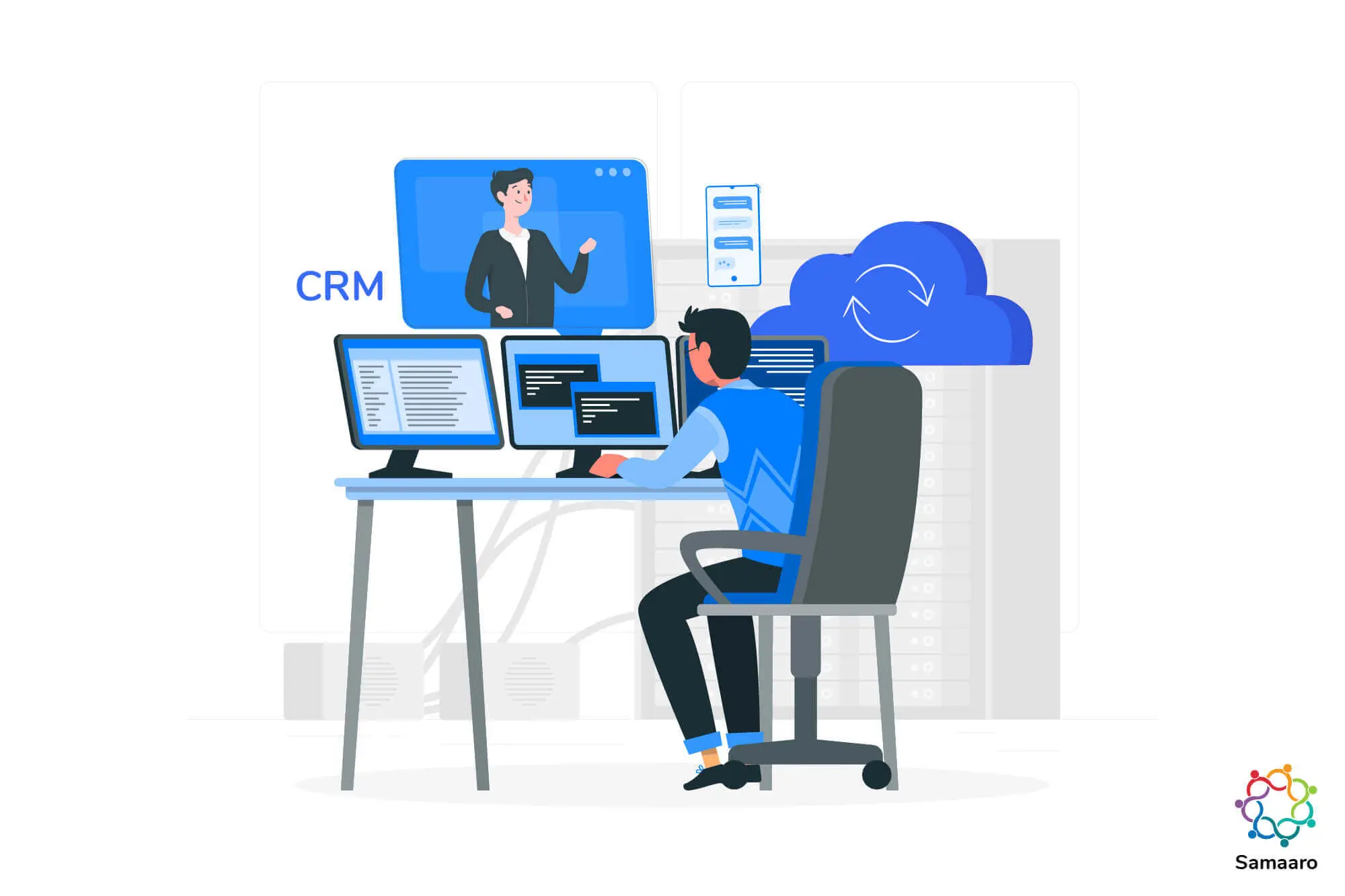Samaaro + Your CRM: Zero Integration Fee for Annual Sign-Ups Until 30 June, 2025
- 00Days
- 00Hrs
- 00Min

By now, we’re all aware of the rising popularity of virtual networking events in the face of the unceasing coronavirus pandemic. And you’ve also probably already heard (one too many times in fact) why now is the perfect time to go virtual/digital/online. One of the key inclinations of businesses today is to hosting a virtual fair to connect with potential clients & customers and market their various products & services on offer. And in doing so, foster meaningful networking connections through the power of digital technologies.

Simply put, a virtual fair is a completely digitized version of a physical business fair, featuring exhibitions organized for companies to showcase & demonstrate all that they have to offer for industry partners, clients, customers, and more. These fairs are usually open to the general public that express interest in the company’s products & services being advertised.
Some of the advantages that hosting a virtual fair enjoys over their in-person counterparts include:

Given the current situation, virtual fairs are extremely beneficial to businesses, no matter how big or small. And with the some of the advantages of doing so mentioned above, there honestly is very little reason not to do so. Having said this, the next question that w(sh)ould immediately arise is, “how do I host a virtual fair for my business?”
The answer to the above question first requires an understanding of the different types of virtual fairs, because each one serves its own unique purpose(s) and its effectiveness will invariably vary depending on the intention of your business.





It goes without saying that brand integration is an integral part of personalizing your virtual event and increasing the visibility of your business. With the help of useful tools such as interactive booths, banners, standees, custom themes, social wall integration, display screens, custom domain hosting, and dedicated exhibit spaces, you can draw the collective attention of all audience members to your brand.

Since attendees don’t have to physically get up and go from one place to another in a virtual fair, networking becomes all the more easy & less time consuming. Specific provisions such as networking lounges, conference rooms, and exhibition zones can further help build connectivity among audience members and other participants, and even hosts. The culmination of such elements goes a long way in boosting overall audience involvement and engagement throughout the entirety of your virtual fair.

Major software integrations allow for your virtual fair to remain flexible and extensible. This includes video conferencing, mail, CRM, cloud storage, SMS, social media, chat bots, and payment getaways, to name but a few.

One of the most important necessities for hosting a virtual fair is making sure that it is completely secure. Built in native protection on every level will guarantee that your event, attendees, data, and information is safeguarded from external threats. Some of the sub-features that you should expect include an SSL Certification, password protection, encrypted data, and intrusion detection.

Engaging with audiences can be taken to the next level with the inclusion of fun mini-games throughout your event. These games will keep the enthusiasm of audience members high, which will have many positive implications for your fair as a whole.

The process of capturing and curating data relevant to event performance has been made all the more accessible for event hosts with the help of analytical tools. Leveraging these intelligent tools empowers host organizations to optimize their event to the best of their abilities. Some useful tools that you can leverage for your virtual fair are live polls, Q&As, AMAs, surveys, most downloaded resources, and attendee heat maps.

? Partner with the right virtual events platform that will be by your side from conceptualization to execution, preferably with round the clock 24×7 support.
? Don’t forget to have a test run for your virtual fair. This step will keep you prepared for any bugs or technical glitches that you may run into later.
? Sponsors are considered to be the backbone of virtual networking events. Try and get as many sponsors involved in your virtual fair and weave them into different corners of your event space.
? Don’t expect all attendees to be online at the same time. Things like presentations & panel discussions shouldn’t be restricted to live ones; pre-recorded ones should be made accessible to attendees too.
?Make your virtual fair easily accessible for your attendees. This means optimizing it for devices across different platforms, so that audience can join in from any device.
? Don’t forget to analyse the data after the virtual fair is over so that you don’t miss out on valuable information corresponding to your audience.
? Include as many interactive elements as possible like polls, quizzes, games, Q&As, and more. Your audience members should not feel deprived of fun activities to participate in throughout the event.
.
? Don’t schedule an event that lasts throughout the entire day. Attendees are generally not available for such long durations. Moreover, not every attendee will want to stay throughout. It is recommended to go for a half-day or less for the duration.
With all of the prerequisite information explained above in detail, the next step for you to take is to find the right virtual events platform to bring your vision to (virtual) reality. And what better platform to recommend, than ours!
Want to host a Virtual Event? Explore the Most powerful Virtual Events Platform to host the best Virtual Events!
Samaaro is the most powerful and one of the best virtual event platform that organizations leverage to host virtual events, virtual exhibitions, virtual conferences, and so much more. Ours is the one platform to go to for all your virtual needs – be it for Business Communication, Sales & Marketing, Education & Career, and Industry Uses to name a few. Our platform is rich in features for your business to effectively leverage to create a memorable virtual experience.

Samaaro is an all-in-one event technology company that offers a comprehensive suite of event management solutions to help event organisers streamline operations, boost attendee engagement and maximise ROI of their events.


© 2025 — Samaaro. All Rights Reserved.